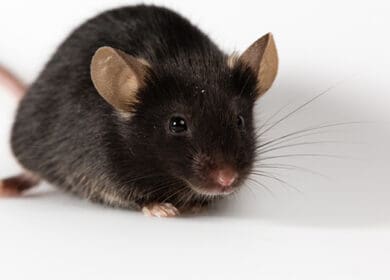B10ScSn
B10ScSn
| Strain details | |
|---|---|
| Nomenclature | C57BL/10ScSnOzarc |
| Common name | B10ScSn |
| Synonyms | B10, B10 Scotty Snell |
| Strain | Inbred |
| Coat colour | Black (a/a) |
| Species | Mouse |
| Genetic background | - |
| Location | Area Oz2 |
Strain descriptions
- MHC haplotype: H2Kb
- C57BL/10ScSn strain is characterized by a high incidence of spontaneous deviants, making it a potential source for mutants with unique genetic characteristics.
- This strain exhibits a remarkable degree of genetic distinctiveness, making it a valuable tool in genetic research.
- It is commonly used as a reference strain for the development of resistant congenic lines that differ from the parental strain by single histocompatibility loci.
- This strain is known to exhibit congenital abnormalities such as microphthalmia (small eyes), corneal opacities (cloudy corneas), and hydrocephalus (accumulation of cerebrospinal fluid in the brain).
- Barbering, a behaviour where mice chew or pluck their own fur or that of cage mates, is also common in this strain.
- The C57BL/10ScSn strain traces its origins back to the original work of C.C. Little in 1921, who created this strain through a mating of Miss Abbie Lathrop’s stock. The strain was then passed on to W.L. Russell, and subsequently to J.P. Scott (Sc) at F26 as a separate subline, and later to George Snell (Sn) at F35-36.
- The C57BL/10ScSn strain has been widely used in various research fields and has numerous applications due to its unique genetic characteristics, making it a valuable tool in advancing scientific knowledge and understanding various biological processes, diseases, and therapies.
Past ARC and transfer reports:
Current Ozgene ARC reports (from 01-Jun-2023)
- This strain is housed in Area Oz2/3/5
- Please see Oz2/3/5 health reports on our Biosecurity page
- Animals are not allowed to be used for propagation
- Ozgene ARC terms and Conditions
- Mouse images are representative only. Actual phenotypes may vary based on genotype, sex, age, husbandry, health status, and other factors.
- Feher L, et al., Correlations between haematological parameters and age in inbred strain C57BL/10ScSn mice. Acta Biol Acad Sci Hung. 1974;25(3):173-80


